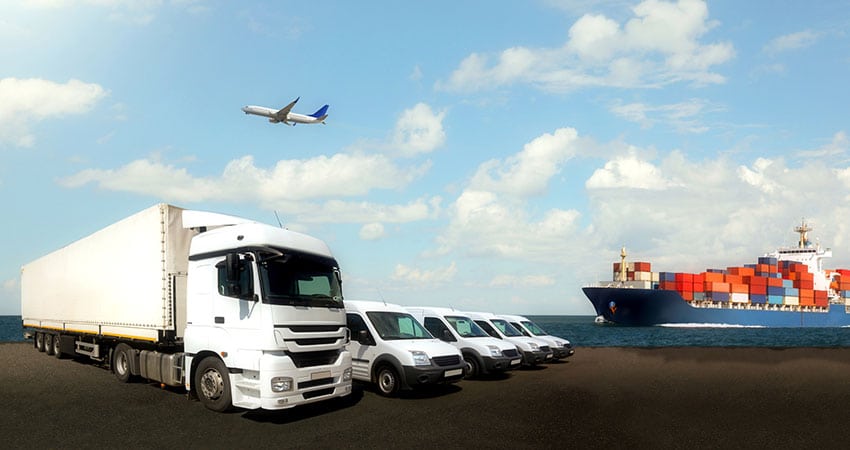Businesses are always analyzing their operations and seeking to streamline them, work more efficiently and reduce costs. But when it comes to shipping expenses, many assume they are fixed costs that cannot be changed. They maintain the status quo and lose out on potential savings.
Actually, there are many innovative ways to reduce freight costs that are rarely explored. Several of them are as simple as conducting freight pickups during off-peak hours or days of the week.
Implementing these practices is a smart choice that can reduce freight costs by as much as 50%. However, it takes a keen eye to examine your freight practices and challenge assumptions. Here are a few tips on reducing freight costs.
Consider Freight Consolidation
Consolidating products from various suppliers to combine shipments, or combining your shipments with other nearby companies to the same retailers, is a winning solution for freight cost savings. Enlist the help of your local Chamber of Commerce or other local business organizations to find a suitable co-shipping partner business.
Take smaller, less container/truckload shipments (LCL or LTL) and consolidate them into larger, full container/truck load shipments (FCL or FTL) to reduce freight costs. Encourage your customers to take larger loads at a time with less frequent deliveries. It is much cheaper to ship more pallets once a week than a few twice a week. Provide incentives to those who agree to consolidate shipments by agreeing to share a small percentage of the freight savings with the retailer, or consider a vendor-managed inventory agreement.
Consider the freight cost savings of working with a third-party logistics company, using a consolidation program that serves companies. Consolidating loads can save up to 25% of your freight costs.
Evaluate Your Mode of Transportation
Sea freight transportation is typically a cheaper option than air, particularly for international shipping, while localized freight is best delivered by rail. Evaluate your process, know which products you’re shipping and their travel distance.
Consider alternate modes of transportation or even a hybrid of multiple modes, if necessary. Shop around for freight quotes from different transportation providers and assess if you can cut costs by utilizing a combination of air, sea and ground transportation.
Become a Regular
Get to know your shipping carrier and work on building this relationship. Consolidation can give you a regular flow of freight in the same lane each day. When your carrier knows he will receive steady business, he is likely to market backhauls and provide better service.
Rather than sending out annual RFPs to find a new carrier, develop a relationship with your current carrier. You’d be amazed how much you can save through a strategic, long-term relationship. Consider signing a longer-term contract as a way to lock in a better rate, rather than adjusting each year to rising prices.
This relationship can improve the efficiency of your shipping operations, tighten your capacity and give you more reliable freight loads. This is because businesses want loyal customers who provide a continuous revenue stream. When your carrier sees you as a loyal customer with a steady single lane, you can save up to 12% compared to traditional lane pricing.
Build Your Reputation as an Efficient Loader
Carriers build their pricing based on an estimated two-hour loading time. If you build your reputation as a fast loader, and they know pallets will be loaded in under an hour, this can lead to cost savings.
For the carrier, this means they can get on the road quicker and service more customers. In appreciation for the efficiency gain, they’re not only more inclined to work with you but will often quote you better rates.
This can take some effort to streamline your operations and make sure you’re reducing loading times, but the rewards are great. Expect to see a savings of $25 per hour built into your carrier contracts when you have an excellent reputation for short loading times.
Not only does this help reduce freight costs, but it often will also get you more favorable loading times built into the carrier contract. This leads to additional cost savings and a better relationship.
Ship During Off-Peak Days and Times
The day and time you ship has a significant impact on your freight costs. Just adjusting a day earlier or later, or an hour or two into off-peak hours, can lead to a considerable reduction.
Consider shipping on off-peak days like Friday. Mondays are another low-volume day to consider when thinking about lowering freight costs.
These types of changes must be made with the cargo in mind, as it is unlikely that you can change shipping days and times for perishable items. For non-perishable goods, this is an excellent working option for a potential cost-savings of up to 10% vs. shipping on peak business days and hours.
Offer to have carriers pick up loads into a backhaul after most others have already closed their docks. Consider evening hours between 6 p.m. and 12 a.m. This can not only help reduce your freight costs but again build your relationship with a carrier.
They will frequently turn down mid-afternoon loads because of conflicts with other runs, but they would gladly fill their backhaul with your freight. This practice of including evening backhauls can cut 15%-20% off standard shipping rates.
Plan Your Packaging Earlier
Many shippers do not realize that packaging accounts for the smallest segment in the freight supply chain, with less than 10% of each dollar. Transportation, on the other hand, is about 60% of the cost, and warehousing is 25%.
Packaging should be designed earlier in the process to adjust for transportation and warehousing needs. While dunnage, blocking, and bracing are necessary to ensure the products arrive safely, especially for a long journey, they can sometimes be used in excess. Work with your packaging supply to use the appropriate amount of dunnage for safe transportation.
Cory Levins is Director of Business Development for Air Sea Containers

